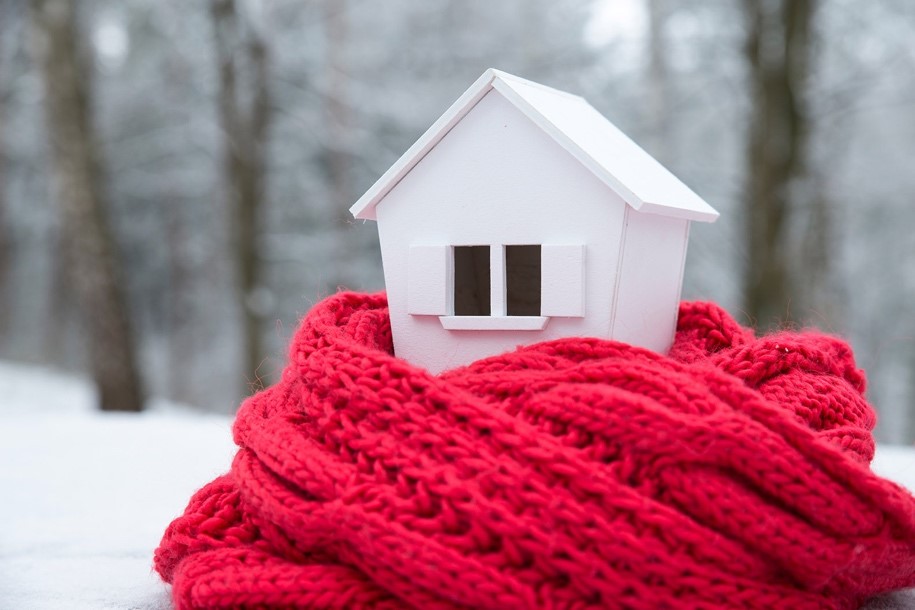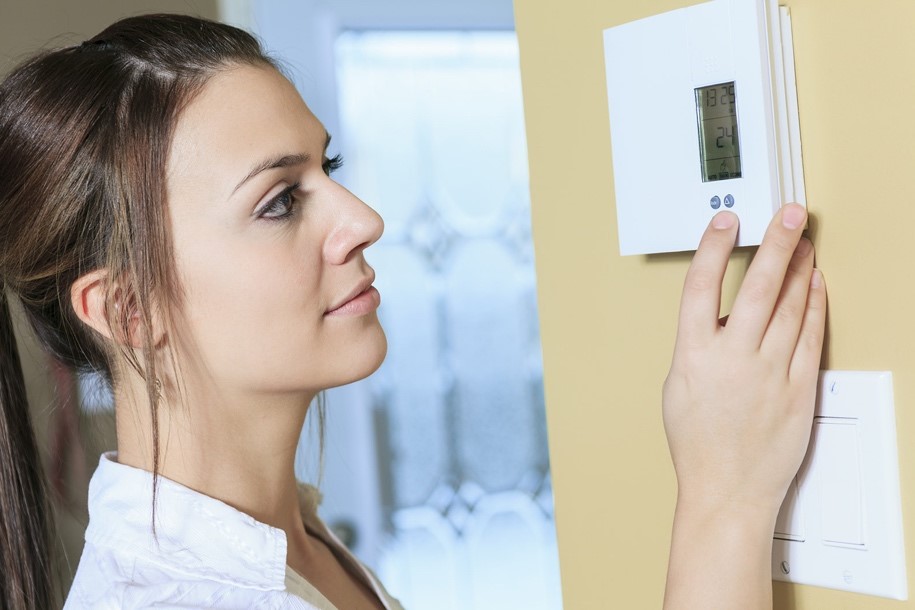Cozying up in a warm house, watching holiday lights twinkle, baking cookies—all beloved winter activities. But long after the cookies are gone, you’re left with energy bills that can bring out anyone’s inner Scrooge. With the average monthly electric bill totaling about $111, plus added natural gas and water costs, it’s easy to feel the pinch of utility bills during the winter months. Reduce energy usage and trim your bills with these tips:
 There are many ways to keep your house warm in winter.
There are many ways to keep your house warm in winter.
 Adjusting thermostat to lowest comfortable temperature.
Adjusting thermostat to lowest comfortable temperature.
- Insulate Your Home
Start with your attic. Insulating an attic can be one of the most cost-effective ways to keep warm, and many people can do it themselves! For most homes, experts recommend using R-30 to R-69 insulation. If you already have the right amount of attic insulation and you’re still having trouble keeping comfortable, consider adding insulation to your walls or basement.
- Fix Air Leaks in Doors and Windows
Did you know that by weather-stripping your doors and windows to seal leaks, you could shave more than 20% off your energy bill? To identify problem areas, shine a flashlight into the edges of doors and windows at night and have someone outside watching for where light shines through.
- Check Heating Filters
A dirty filter will make your heating system work harder and use more energy (which means it will cost you more). You can extend your heater’s life and cut costs just by changing your filter once a month and having your unit serviced once a year. It’s a small investment for potentially big savings.
- Install a Programmable Thermostat
According to the US Environmental Protection Agency’s (EPA) Energy Star® program, the average homeowner can save about $180 a year by using a programmable thermostat. The beauty of it is you can set it to automatically reduce heat when you don’t need as much (like during work hours or when you’re sleeping), then watch your costs shrink.
- Set Your Thermostat Lower in the Winter
We’ve heard it for a long time, but keeping the temperature in your home as low as you’re comfortable with really can make a difference in your winter costs. Having a blanket nearby or wearing a sweater is a small price to pay to save money.
- Buy Energy-Efficient Appliances
Did you know the type of appliances you use could mean hundreds of dollars in energy savings each year? It’s true—Energy Star-certified appliances use 10% to 50% less energy a year compared to standard appliances.3 In addition to costing you less to run, they may even qualify for rebates. Check out the EPA’s list of qualifying products.
- Set Your Water Heater to 120 Degrees
Most water heaters default to 140 degrees, but many households can still get plenty of warm water when lowering the temperature to 120. This single change can reduce your water heating costs by 10%.
- Put Ceiling Fans to Work
Ceiling fans can be as good at warming up rooms as cooling them. Simply change the direction of your ceiling fans so they rotate clockwise—there should be a small switch. This will cause air to be pushed upward, helping spread warm air throughout the room
- Replace Light Bulbs and Holiday Lights with Energy Saving Types
Although light-emitting diode (LED) lights generally cost more up-front, they last 25 times longer and use at least 75% less energy than incandescent bulbs. This means you’ll pay significantly less for electricity over a year if you use LEDs. And, if you use LED holiday lights, they have a lower risk of fire than traditional types, are break-resistant and probably will last 40 holiday seasons.
At the end of the season, you’ll be pleasantly surprised to see how these relatively small changes will have a big impact on your costs—which means more money in your pocket for other things.
Energy Star is a registered service mark of the US Environmental Protection Agency.